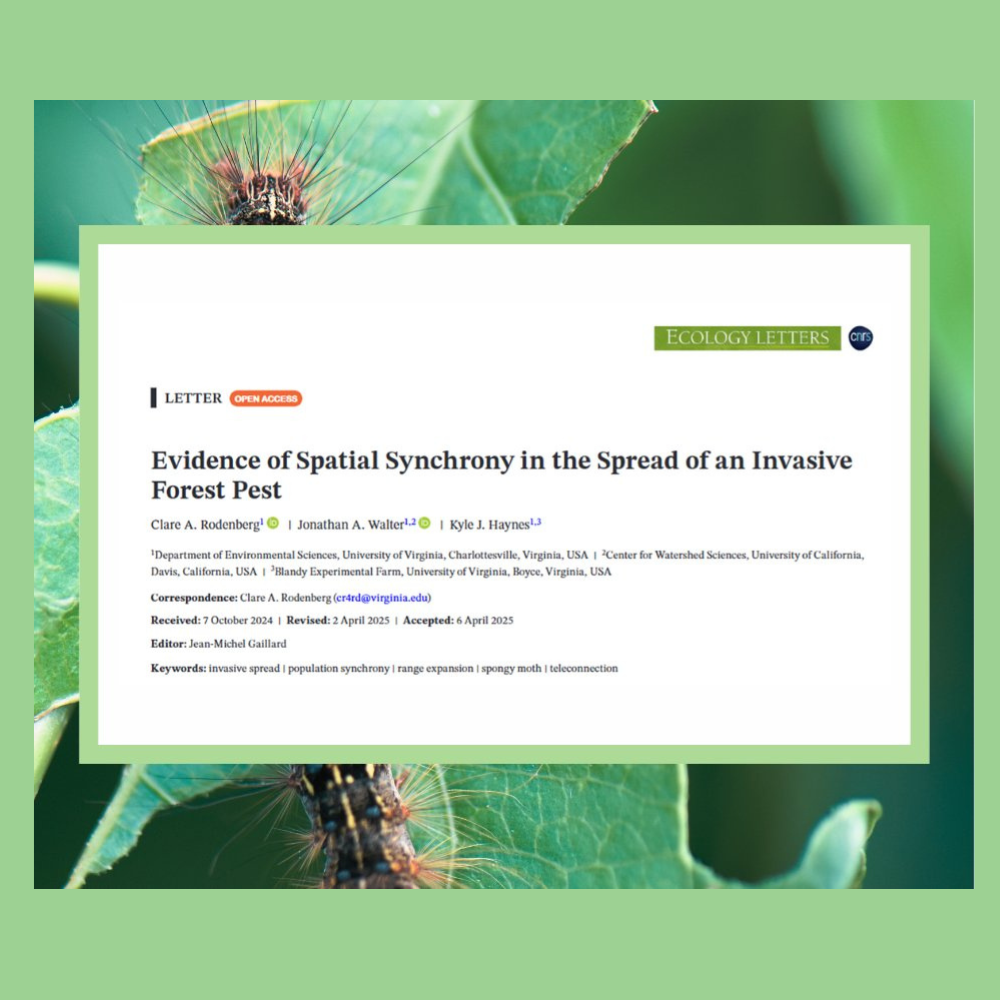- Visit
- Things to Do
- Learn
- Arboretum
- Research
- Support
- About
- People
Blandy Researchers Publish Spongy Moth Study
 Kyle Haynes, Associate Director and Research Professor at Blandy, and two other Blandy researchers, Clare Rodenberg and Jonathan Walter, just published a study on the patterns of range expansion of the spongy moth (𝘓𝘺𝘮𝘢𝘯𝘵𝘳𝘪𝘢 𝘥𝘪𝘴𝘱𝘢𝘳) in the June 2025 volume of Ecology Letters, a premier scientific journal.
Kyle Haynes, Associate Director and Research Professor at Blandy, and two other Blandy researchers, Clare Rodenberg and Jonathan Walter, just published a study on the patterns of range expansion of the spongy moth (𝘓𝘺𝘮𝘢𝘯𝘵𝘳𝘪𝘢 𝘥𝘪𝘴𝘱𝘢𝘳) in the June 2025 volume of Ecology Letters, a premier scientific journal.
The spongy moth, formerly known as the “gypsy moth”, was accidentally introduced into the United States in 1869 in the New England area, and has since slowly expanded west and south, causing irrevocable damage and defoliation to tree populations. The spongy moth is now firmly established in New England, the Mid Atlantic, Michigan, and Wisconsin, and continues to march south into North Carolina and west into the Ohio Valley and Minnesota.
The Blandy team used cutting-edge analyses to reveal a surprising pattern behind how this common invasive insect expands its range outward. Blandy scientists discovered that spongy moth populations don’t spread outward in a slow, steady creep. Instead, populations separated by hundreds of miles pulse forward simultaneously. The study revealed these pulses seem to be tied to weather patterns, like El Nino. Predicting spread using climate patterns including annual snow depth and storm activity has potential to support the USDA Spongy Moth Management Program in its long running quest to slow the spread of this invasive insect.
The team estimates that over 750 hours went into compiling data, developing code, running models, and interpreting the analyses to produce this paper.
Read the full abstract in the June 2025 volume of Ecology Letters.
